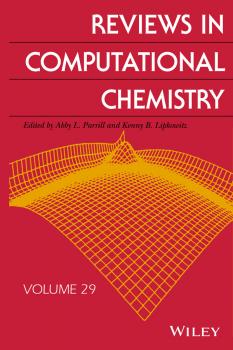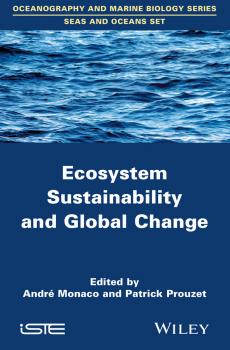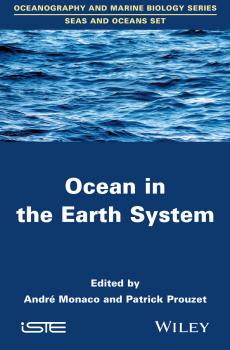Прочая образовательная литература
Различные книги в жанре Прочая образовательная литератураReviews in Computational Chemistry
The Reviews in Computational Chemistry series brings together leading authorities in the field to teach the newcomer and update the expert on topics centered around molecular modeling, such as computer-assisted molecular design (CAMD), quantum chemistry, molecular mechanics and dynamics, and quantitative structure-activity relationships (QSAR). This volume, like those prior to it, features chapters by experts in various fields of computational chemistry. Topics in Volume 28 include: Free-energy Calculations with Metadynamics Polarizable Force Fields for Biomolecular Modeling Modeling Protein Folding Pathways Assessing Structural Predictions of Protein-Protein Recognition Kinetic Monte Carlo Simulation of Electrochemical Systems Reactivity and Dynamics at Liquid Interfaces
Reviews in Computational Chemistry
The Reviews in Computational Chemistry series brings together leading authorities in the field to teach the newcomer and update the expert on topics centered on molecular modeling. • Provides background and theory, strategies for using the methods correctly, pitfalls to avoid, applications, and references • Contains updated and comprehensive compendiums of molecular modeling software that list hundreds of programs, services, suppliers and other information that every chemist will find useful • Includes detailed indices on each volume help the reader to quickly discover particular topics • Uses a tutorial manner and non-mathematical style, allowing students and researchers to access computational methods outside their immediate area of expertise
Reviews in Computational Chemistry
The Reviews in Computational Chemistry series brings together leading authorities in the field to teach the newcomer and update the expert on topics centered on molecular modeling, such as computer-assisted molecular design (CAMD), quantum chemistry, molecular mechanics and dynamics, and quantitative structure-activity relationships (QSAR). This volume, like those prior to it, features chapters by experts in various fields of computational chemistry. Topics in Volume 29 include: Noncovalent Interactions in Density-Functional Theory Long-Range Inter-Particle Interactions: Insights from Molecular Quantum Electrodynamics (QED) Theory Efficient Transition-State Modeling using Molecular Mechanics Force Fields for the Everyday Chemist Machine Learning in Materials Science: Recent Progress and Emerging Applications Discovering New Materials via a priori Crystal Structure Prediction Introduction to Maximally Localized Wannier Functions Methods for a Rapid and Automated Description of Proteins: Protein Structure, Protein Similarity, and Protein Folding
Tools in Fluvial Geomorphology
Fluvial Geomorphology studies the biophysical processes acting in rivers, and the sediment patterns and landforms resulting from them. It is a discipline of synthesis, with roots in geology, geography, and river engineering, and with strong interactions with allied fields such as ecology, engineering and landscape architecture. This book comprehensively reviews tools used in fluvial geomorphology, at a level suitable to guide the selection of research methods for a given question. Presenting an integrated approach to the interdisciplinary nature of the subject, it provides guidance for researchers and professionals on the tools available to answer questions on river restoration and management. Thoroughly updated since the first edition in 2003 by experts in their subfields, the book presents state-of-the-art tools that have revolutionized fluvial geomorphology in recent decades, such as physical and numerical modelling, remote sensing and GIS, new field techniques, advances in dating, tracking and sourcing, statistical approaches as well as more traditional methods such as the systems framework, stratigraphic analysis, form and flow characterisation and historical analysis. This book: Covers five main types of geomorphological questions and their associated tools: historical framework; spatial framework; chemical, physical and biological methods; analysis of processes and forms; and future understanding framework. Provides guidance on advantages and limitations of different tools for different applications, data sources, equipment and supplies needed, and case studies illustrating their application in an integrated perspective. It is an essential resource for researchers and professional geomorphologists, hydrologists, geologists, engineers, planners, and ecologists concerned with river management, conservation and restoration. It is a useful supplementary textbook for upper level undergraduate and graduate courses in Geography, Geology, Environmental Science, Civil and Environmental Engineering, and interdisciplinary courses in river management and restoration.
Ecology of North America
North America contains an incredibly diverse array of natural environments, each supporting unique systems of plant and animal life. These systems, the largest of which are biomes, form intricate webs of life that have taken millennia to evolve. This richly illustrated book introduces readers to this extraordinary array of natural communities and their subtle biological and geological interactions. Completely revised and updated throughout, the second edition of this successful text takes a qualitative, intuitive approach to the subject, beginning with an overview of essential ecological terms and concepts, such as competitive exclusion, taxa, niches, and succession. It then goes on to describe the major biomes and communities that characterize the rich biota of the continent, starting with the Tundra and continuing with Boreal Forest, Deciduous Forest, Grasslands, Deserts, Montane Forests, and Temperature Rain Forest, among others. Coastal environments, including the Laguna Madre, seagrasses, Chesapeake Bay, and barrier islands appear in a new chapter. Additionally, the book covers many unique features such as pitcher plant bogs, muskeg, the polar ice cap, the cloud forests of Mexico, and the LaBrea tar pits. “Infoboxes” have been added; these include biographies of historical figures who provided significant contributions to the development of ecology, unique circumstances such as frogs and insects that survive freezing, and conservation issues such as those concerning puffins and island foxes. Throughout the text, ecological concepts are worked into the text; these include biogeography, competitive exclusion, succession, soil formation, and the mechanics of natural selection. Ecology of North America 2e is an ideal first text for students interested in natural resources, environmental science, and biology, and it is a useful and attractive addition to the library of anyone interested in understanding and protecting the natural environment.
Modeling Atmospheric and Oceanic Flows. Insights from Laboratory Experiments and Numerical Simulations
Modeling Atmospheric and Oceanic Flows: Insights from Laboratory Experiments and Numerical Simulations provides a broad overview of recent progress in using laboratory experiments and numerical simulations to model atmospheric and oceanic fluid motions. This volume not only surveys novel research topics in laboratory experimentation, but also highlights recent developments in the corresponding computational simulations. As computing power grows exponentially and better numerical codes are developed, the interplay between numerical simulations and laboratory experiments is gaining paramount importance within the scientific community. The lessons learnt from the laboratory–model comparisons in this volume will act as a source of inspiration for the next generation of experiments and simulations. Volume highlights include: Topics pertaining to atmospheric science, climate physics, physical oceanography, marine geology and geophysics Overview of the most advanced experimental and computational research in geophysics Recent developments in numerical simulations of atmospheric and oceanic fluid motion Unique comparative analysis of the experimental and numerical approaches to modeling fluid flow Modeling Atmospheric and Oceanic Flows will be a valuable resource for graduate students, researchers, and professionals in the fields of geophysics, atmospheric sciences, oceanography, climate science, hydrology, and experimental geosciences.
Ecosystem Sustainability and Global Change
This volume provides various examples and dimensions, chemical, biological, climatic, or related to extreme (hazards). It describes, by reciprocity, the vulnerability of ecosystems, resources, heritage, human health and, consequently, economic and social sectors. it considers climate scenarios and socio-economic status indicators research, design strategies and patterns of adaptation, development of innovative monitoring systems, analysis of perceptions of major hazards and valuation of ecosystem services.
Ocean in the Earth System
Complexity is an intrinsic property of natural systems. In the oceanic system, it is linked to many interactions with the atmosphere, geosphere and biosphere with which it exchanges energy and matter. Complexity of the ocean system has, at different spatial and temporal scales, hydrodynamic mechanisms of these exchanges and dynamics of elements and compounds, they are involved in biogeochemical cycles or used as tracers. By its pedagogical approach, it defines the terms, methods, techniques and analytical tools used. Then, it analyzes the consequences of climate change, future projections, human impact and the concept introduced with planktonic pelagic ecosystem component
Plant-Environment Interaction. Responses and Approaches to Mitigate Stress
The increase in global population, urbanization and industrialization is resulting in the conversion of cultivated land into wasteland. Providing food from these limited resources to an ever-increasing population is one of the biggest challenges that present agriculturalists and plant scientists are facing. Environmental stresses make this situation even graver. Plants on which mankind is directly or indirectly dependent exhibit various mechanisms for their survival. Adaptability of the plants to changing environment is a matter of concern for plant biologists trying to reach the goal of food security. Despite the induction of several tolerance mechanisms, sensitive plants often fail to withstand these environmental extremes. Using new technological approaches has become essential and imperative. Plant-Environment Interaction: Responses and Approaches to Mitigate Stress throws light on the changing environment and the sustainability of plants under these conditions. It contains the most up-to-date research and comprehensive detailed discussions in plant physiology, climate change, agronomy and forestry, sometimes from a molecular point of view, to convey in-depth understanding of the effects of environmental stress in plants, their responses to the environment, how to mitigate the negative effects and improve yield under stress. This edited volume is written by expert plant biologists from around the world, providing invaluable knowledge to graduate and undergraduate students in plant biochemistry, food chemistry, plant physiology, molecular biology, plant biotechnology, and environmental sciences. This book updates scientists and researchers with the very latest information and sustainable methods used for stress tolerance, which will also be of considerable interest to plant based companies and institutions concerned with the campaign of food security.
Critical Perspectives on Gender and Student Leadership. New Directions for Student Leadership, Number 154
How do students’ social identities, particularly their gender, influence their leadership practices and development? Using Kimberlé Crenshaw’s concept of intersectionality as a framework, this volume discusses existing and emergent research on gender and leadership and offers key strategies and on how leadership educators can engage students in these topics and provide contemporary critical thinking on how gender and leadership inform one another. This volume examines: the ways intersectionality can be used as a lens for gender and leadership, key considerations for developing and advancing leadership among women, men, and trans* students, programs and experiences grounded in critical self-reflection and leadership learning among students of all genders, and opportunities for leadership educators to navigate topics of gender and leadership, emphasizing their own self-work and avenues for affecting positive change. Contributing scholars share examples that are developmentally appropriate for high school and college students. This work is designed with leadership educators in mind, emphasizing theory into practice and highlighting the ways that leadership and gender can promote holistic, transformative learning for all students. The Jossey-Bass quarterly report series New Directions for Student Leadership explores leadership concepts and pedagogical topics of interest to high school and college leadership educators. Issues are grounded in scholarship and feature practical applications and best practices in youth and adult leadership education.









